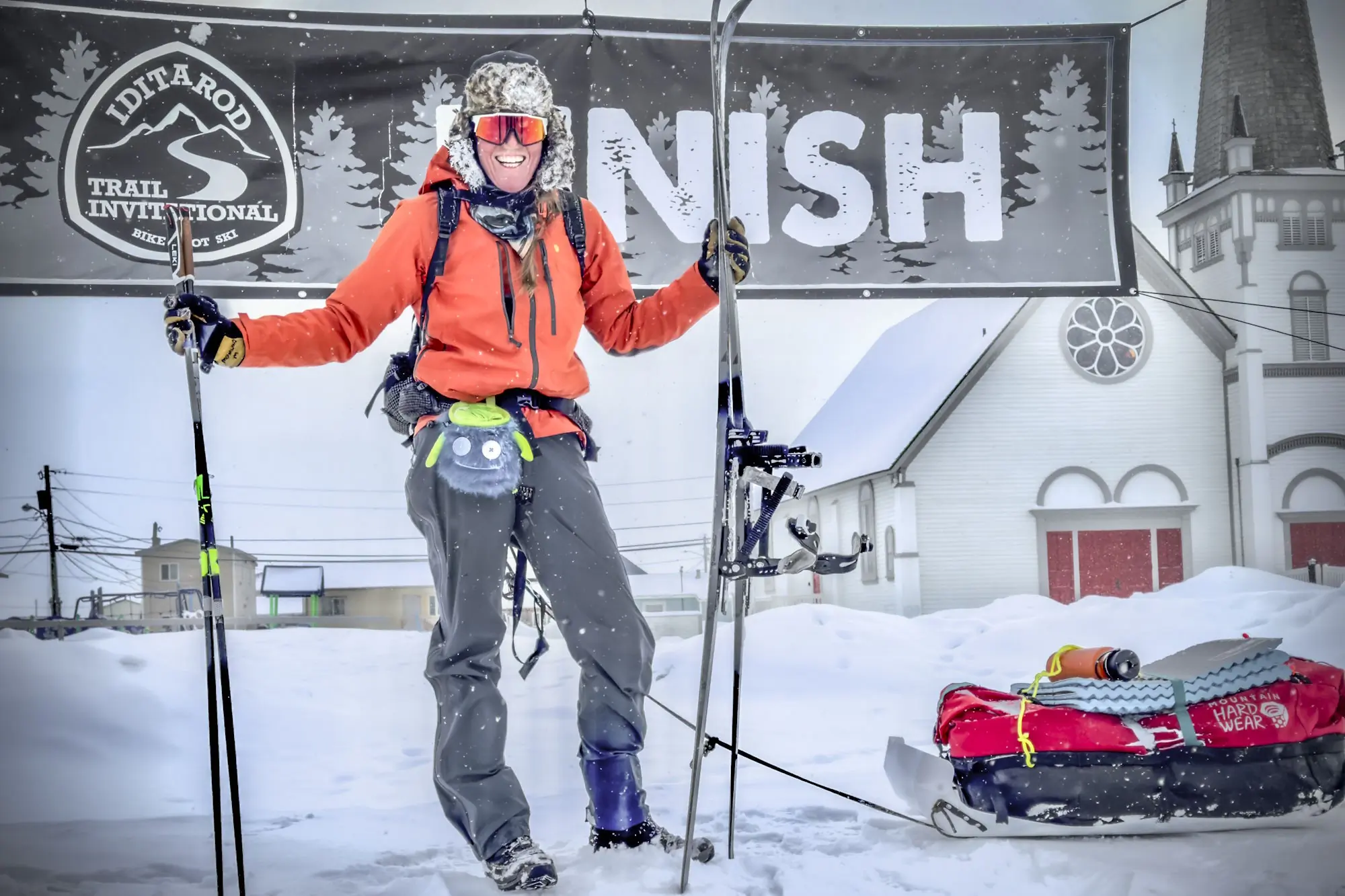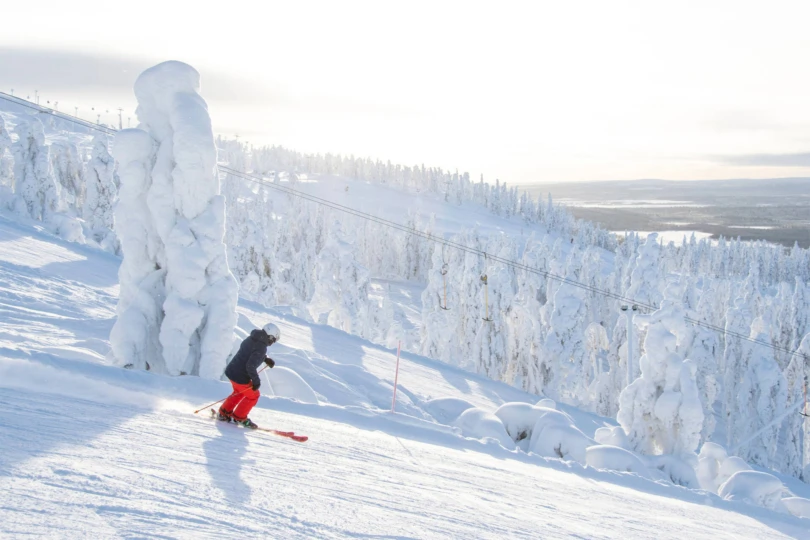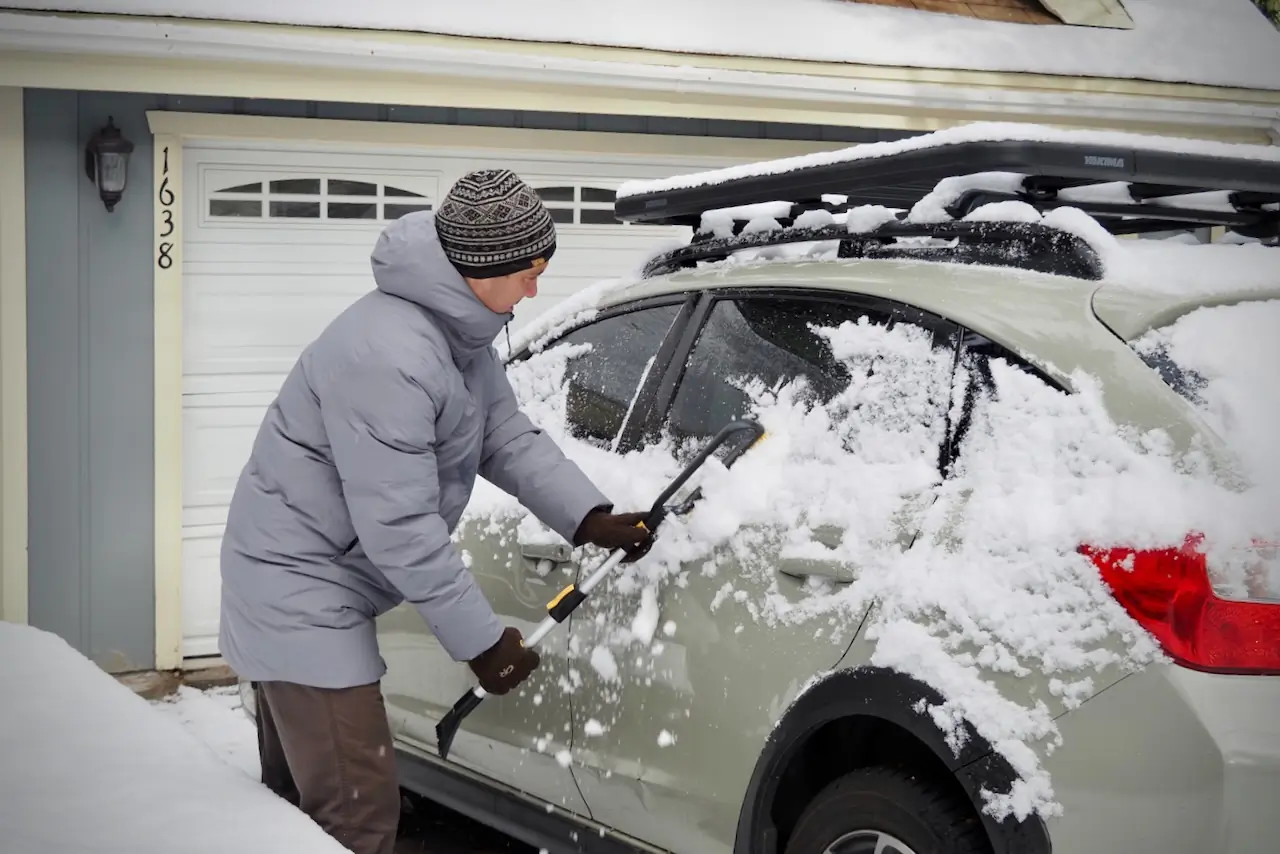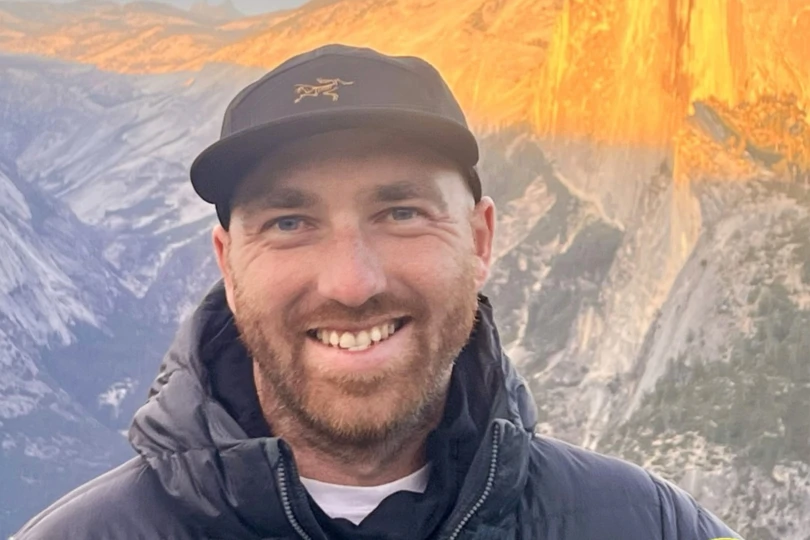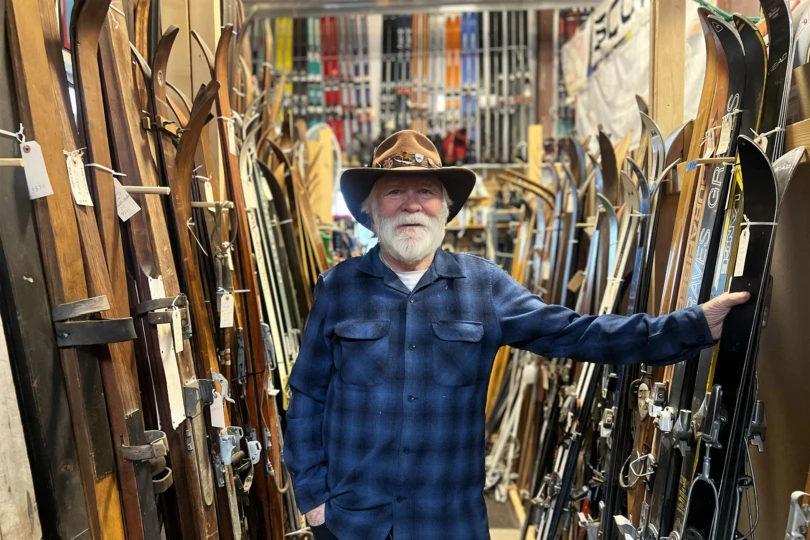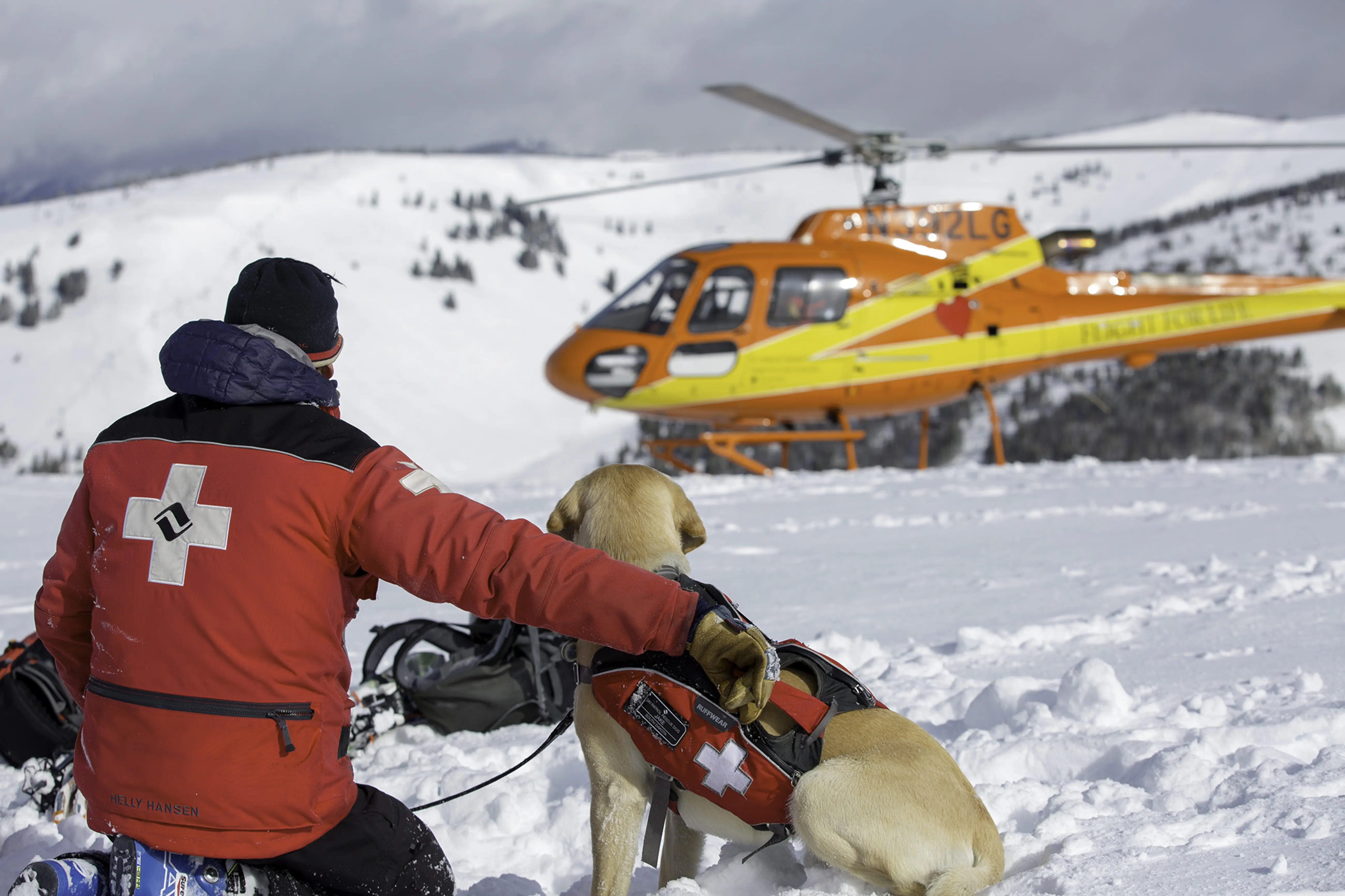At the end of March, Sunny Stroeer became the first woman in history to complete the 1,000-mile Iditarod Trail Invitational (ITI) on skis. She finished this self-supported ultramarathon in 29 days, 23 hours, and 6 minutes, less than 1 hour under the 30-day cutoff.
To top it all off, until this year, she never considered herself a skier. But after 1,000 miles across Alaska on cross-country skis, she may have just earned herself that title — among other things.
While on a backpacking trip testing gear with Fjallraven this summer, Sunny had endless stories about her recent ITI experience. Her campfire tales from a month in the Alaska wilderness were wild, to say the least. And once I realized this accomplishment hadn’t gotten much press, it piqued my interest even more.
The ITI is a complex race. You can race it on skis, on foot, or on a fat bike. There’s a shorter 350-mile race and a longer, 1,000-mile version that goes from Anchorage to Nome, Alaska. Then there’s the dog sled race, which follows the same route as the 1,000-mile ITI, but the dog sled race isn’t a part of the ITI.
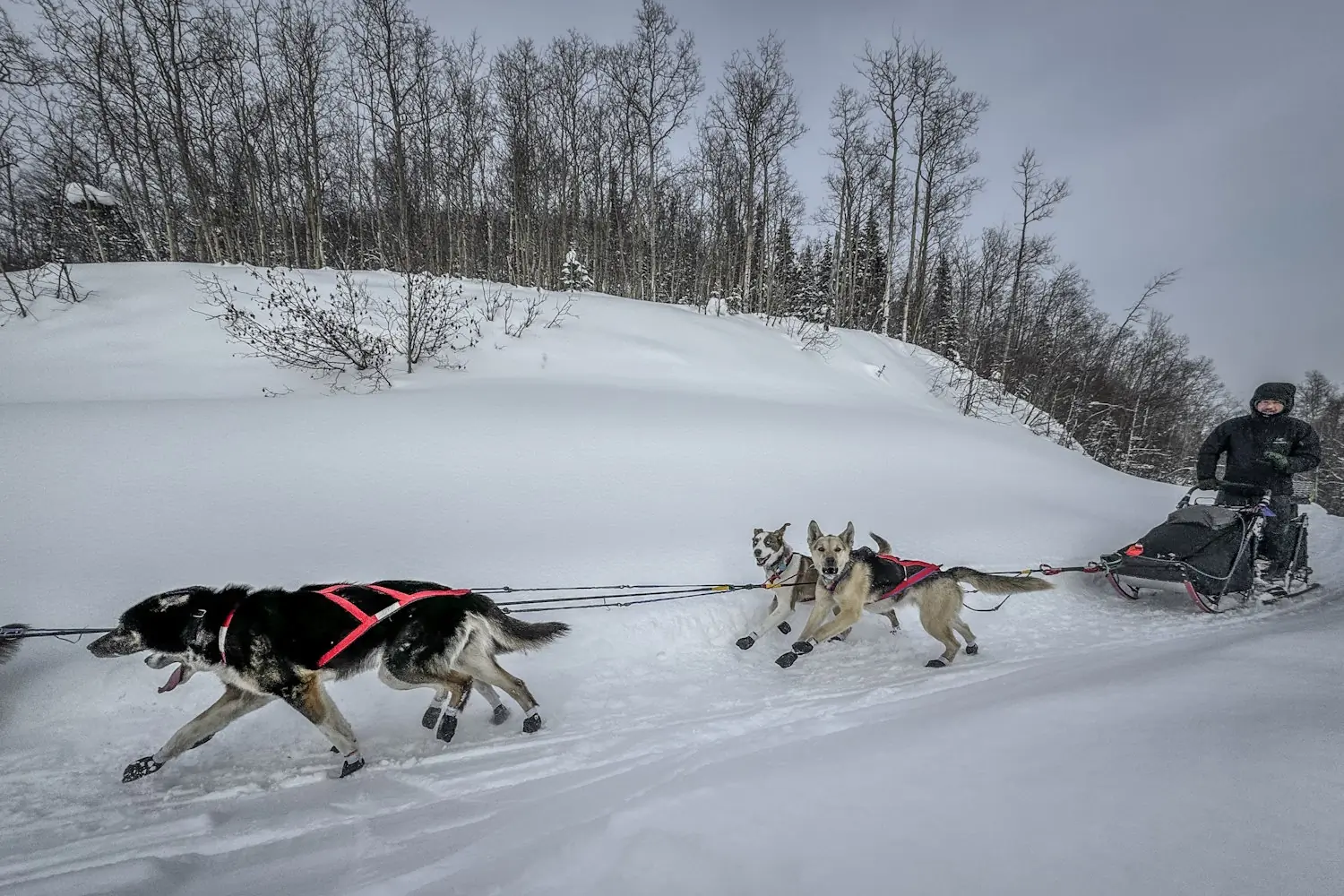
Three different disciplines and two race lengths, for a total of six distinct races put on by a single race organization. All iterations of the race start in Anchorage and follow the Historic Iditarod Trail. Plus, another race with dogs follows the same Iditarod route and shares a name but is otherwise different.
Like I said, it’s complex.
I sat down to discuss all things Iditarod with Stroeer one warm afternoon in July, in a world entirely different from late-winter Alaska. We discussed the race in detail and tried to understand why people still aren’t talking about this.
Q&A With Sunny Stroeer: The First Woman to Complete 1,000-Mile Iditarod on Skis
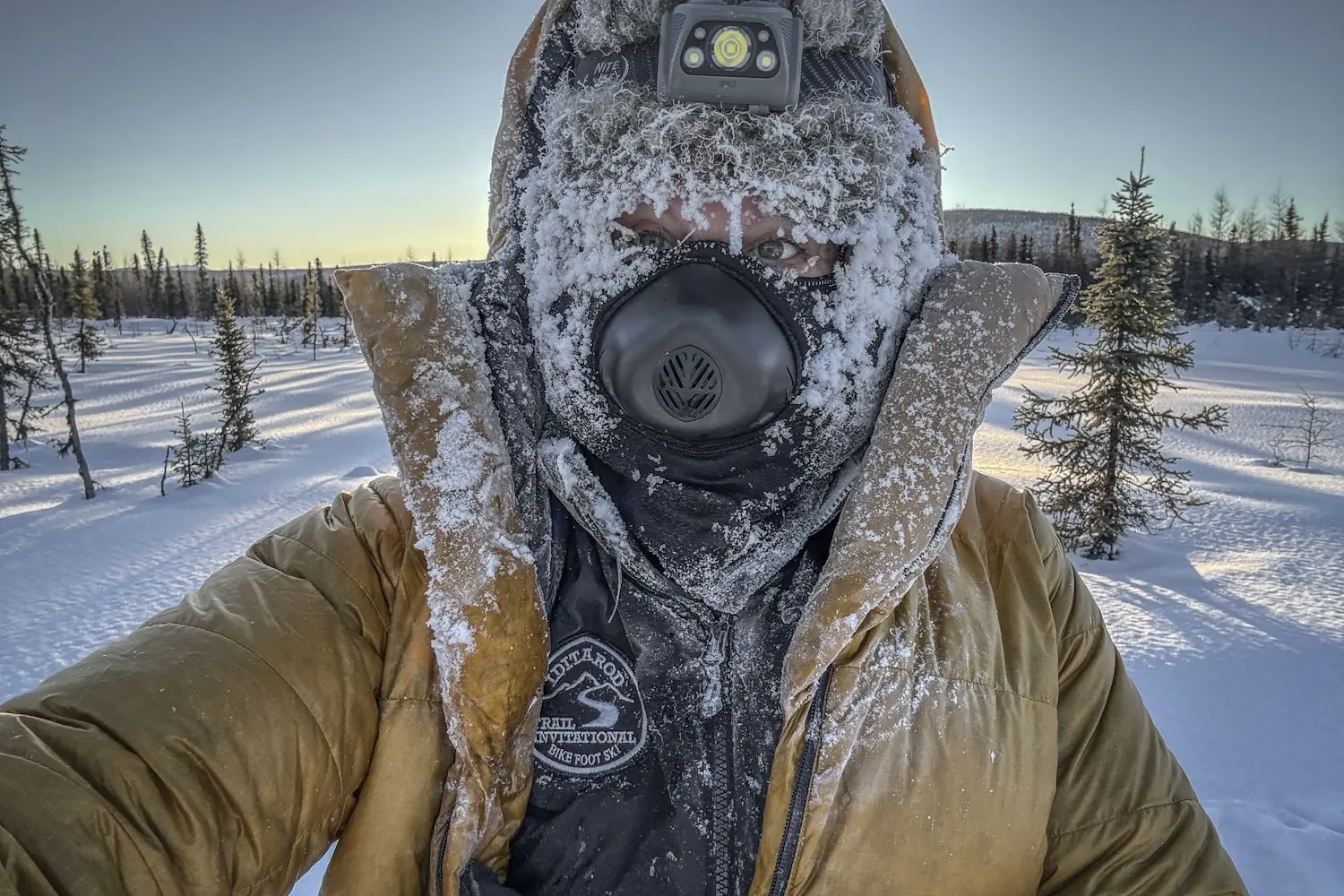
GJ: Tell us a little about your background. You’ve set other FKTs in the past, correct?
Stroeer: That is correct. I like to say that I specialize in VLDs, as in very long distances: anything that’s remote, anything that’s far, anything that’s high up. It could be hiking, it could be running, and it could be cross-country skiing. I don’t like wheels, though. That’s the main thing.
But, didn’t you also previously complete the Iditarod on wheels?
I have done the Iditarod on wheels, the short version. So the challenge with the Iditarod Trail Invitational is — and this goes into part of why it hasn’t been covered — I think it’s obscure. And it’s complex.
So there’s the dog race — not what we’re talking about, here — and there’s the human-powered race. And within the human-powered race, you have the short version and the long version. The short version is 350 miles. The long version is 1,000. Within each of those races, you have three disciplines: foot, ski, and bike. I’ve done the short one twice before on skis, once before on bike, and then I just completed the long version on skis.
So, the longer ITI, which you completed this year on skis, is 1,000 miles. How long did it take you to complete it?
The 1,000-mile took me 29 days, 22 hours, and 6 minutes, which is significant because there’s a 30-day cutoff, and I came very close to timing out.
How did it go, and how was the race overall?
It was epic, it was hard, it was sustained. Something that I like about the ITI is it’s not each individual day that’s the greatest challenge. It’s just like any big thru-hike: day after day, after day, after day. It’s just relentless. And it’s very stark and beautiful. And very cold.
What were the biggest challenges you faced during those 29 days?
The biggest challenge in this race was just stringing it all together, day after day, and the variability in the weather. I was looking at temperature swings of about 80 degrees. The warmest that I experienced was in the mid-30s. The coldest that I had was -50 (Fahrenheit). And you know, each of those extremes is difficult for its own reasons.
In some ways, though, I think that the hardest part of doing something like this is the mindset and the mental challenge. Sure, you have to have the fitness to be able to put down the miles. But trying to stay with it, stay in the moment, stay present for 30 days in a row, when every day is really challenging, that’s difficult.
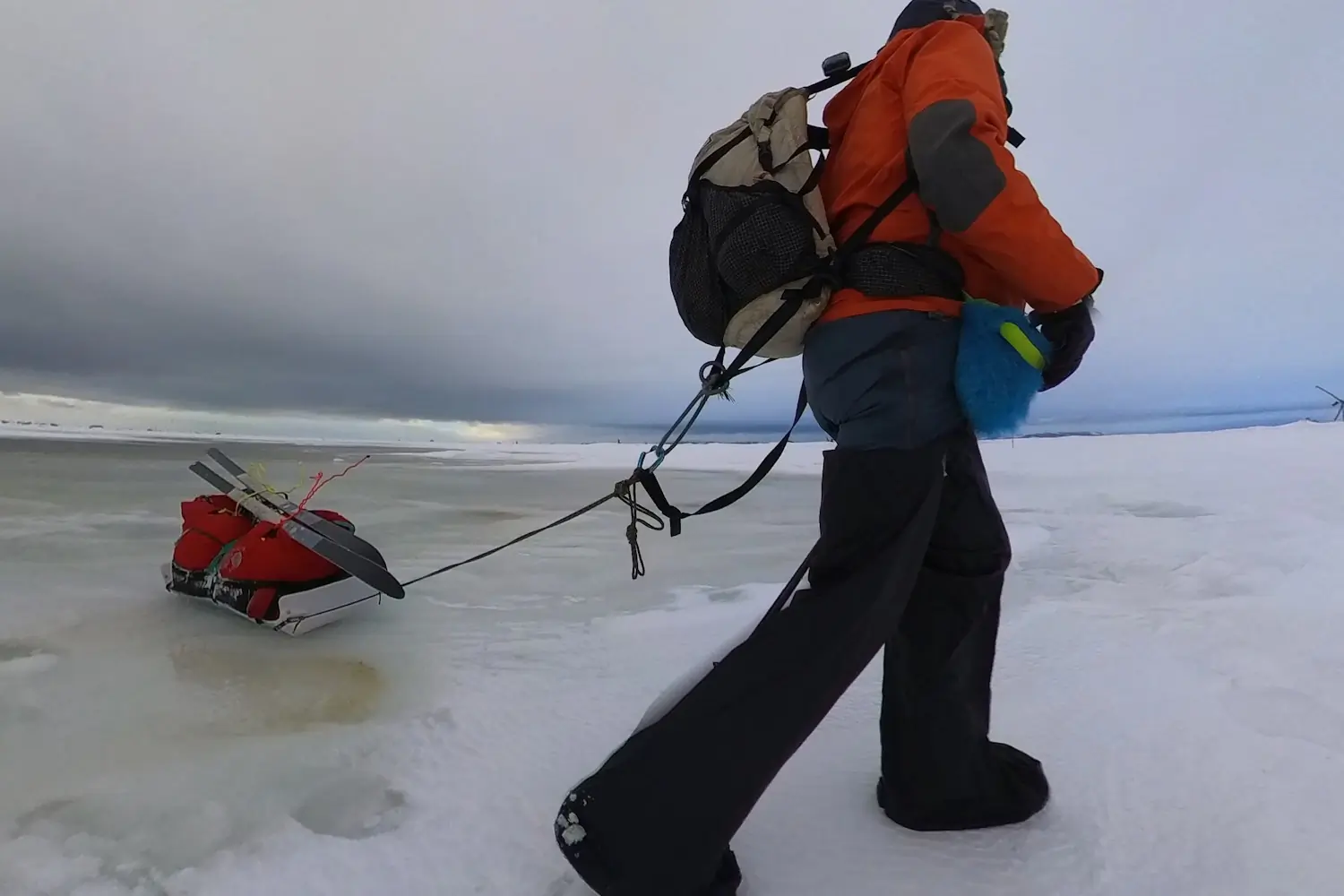



As far as getting up every morning to get going again? In some ways, it actually wasn’t difficult for a while. For the first 25 or so days, I had so much curiosity and so little expectation and understanding of what I was going to encounter that the curiosity and the uncertainty were driving me forward.
Once I came closer to the finish line, and once I thought, “I have a shot at doing this,” that’s when it started getting hard. At that point, I thought, “Okay, I’ve done this for 3 and a half weeks. I’m confident I can do it. Now it’s just a matter of having to get up at four in the morning in shitty weather and slog through miserable conditions for 16 hours a day.” Yeah, that’s when it started being hard.
Initially, did you expect to be able to finish the 1,000 miles before the 30-day time cutoff?
I had no idea. In the 24-year history of the race, there hadn’t been a single person yet, male or female, who had managed to actually do that whole distance on skis within the 30 days. So, I knew that statistically speaking, the odds were against me. And I’m not a skier. And I hadn’t been able to train because I was coming off a stress fracture in my shin.
So, there were lots of things against me. But I also knew that I was good from a mental perspective. I’m good with my strategy. I’m good with my survival skills. So, I was hoping that I might have a shot. But I had no idea.
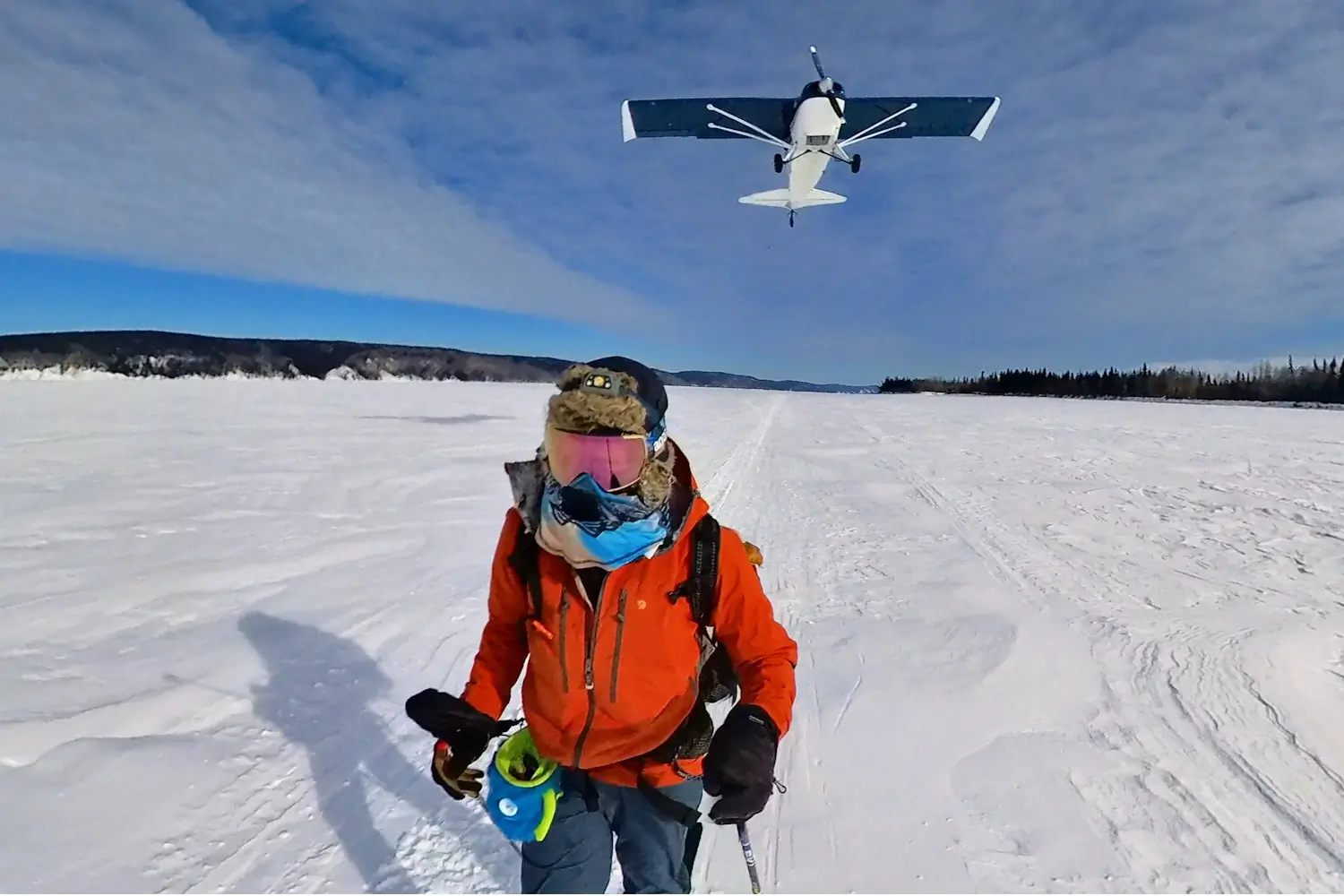



In years past, there have been many who tried the 1,000-mile ITI on skis. Of the four men who ended up completing it faster than me this year, two had tried it on skis. The other two men had been to Nome before in different disciplines, either on bike or on foot. So not only was I the only woman, but I was also the only person who was a 1,000-mile rookie to make it to Nome this year.
What was your training strategy for the race? If you had a stress fracture in the lead-up to the race, what could you do to prepare?
I had a pretty big handicap because I tried to set an FKT on the Arizona Trail in November-December and then got a stress fracture in the first days of December. This means I had to stay off my feet until late January, and I left for Alaska in the second half of February. So yeah, I couldn’t really train extensively. I was banking on the cardio that I’ve built over the last decade-plus.
Otherwise, I tried to get really dialed with my gear, race strategy, mental game, and with my extreme cold overnight skills. I went and bivvied near Bryce Canyon at 10,000 feet in -20-degree temperatures a bunch of times to try and get that dialed.
What were the biggest challenges you faced during the race?
So it was really difficult to start with. In the first 350 miles of the course, I was on just being able to cruise. But it didn’t happen that way. On day three, we had a really bad windstorm that knocked out about 40% of the competitors across the long and short distances in all disciplines. It was so windy. The trail was completely blown in.
Up until the storm, I was solidly in the middle of the middle of the field. Then, all of a sudden, I was at the very, very back of the pack.
Then going across the Alaska Range, which is still a part of the short distance, I made a really big mistake that almost ended my race. I forgot my big down jacket at one of the checkpoints and didn’t realize it until after I crested the pass in the Alaska Range, more than 18 miles away from that checkpoint.
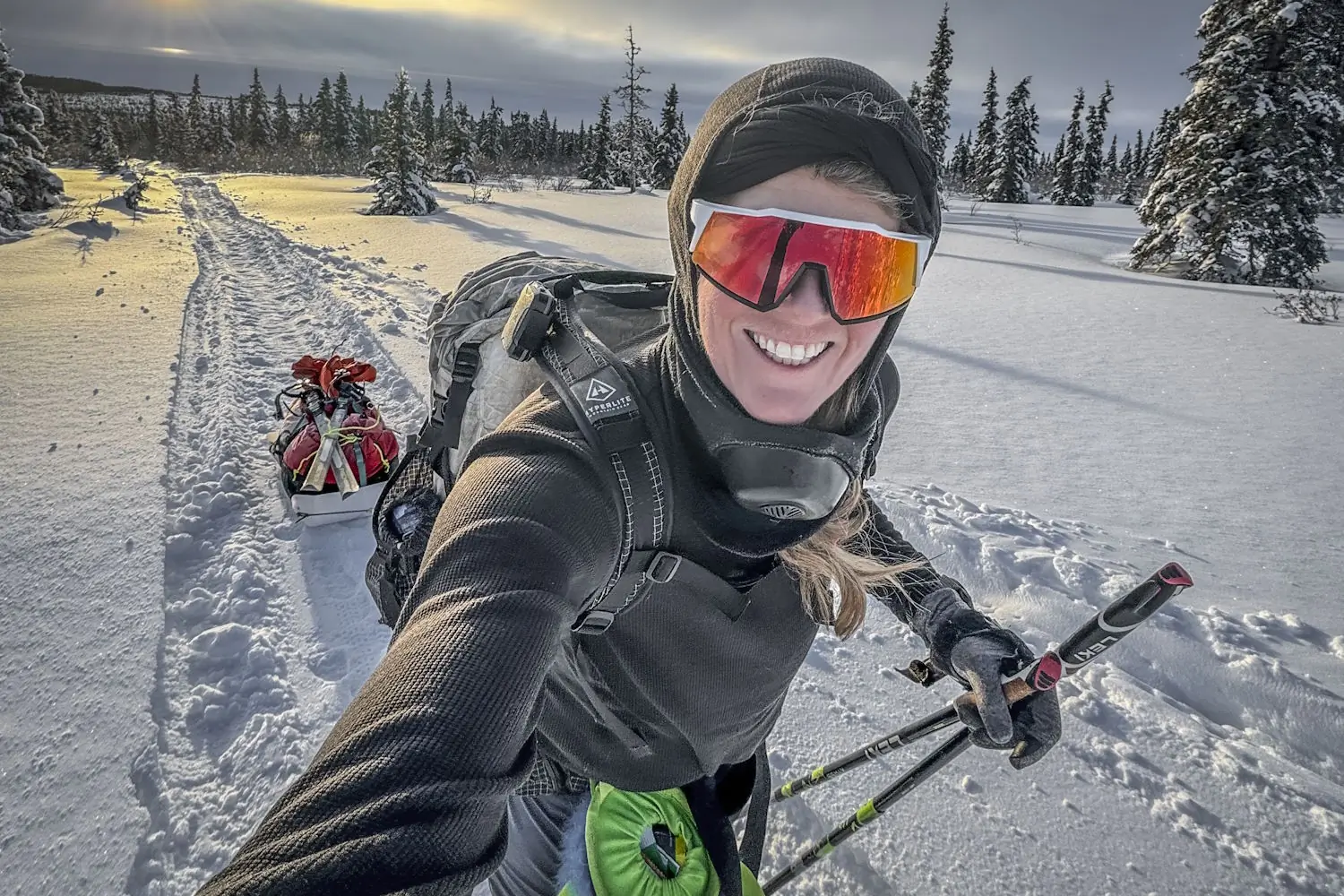



This was one of the coldest days of the race — in the -50-degree range. And the whole time, I was thinking, “I’m just going to push through this. I’m going to allow myself to fall behind on calories. I’ll allow myself to fall behind on temperature management. Because once I’m past the crest, I’ll get out of the wind, I’ll get my big puffy on. I’ll just ski in my big puffy and start eating again.”
But once I was past the crest, I realized I didn’t have it.
So that was bad. I was critically cold and critically underfed. My only option at that point was to get into my sleeping bag to be safe. But I was also chasing cut-offs already at that point. So I thought, “This is it. My race is over.”
Well, long story short, I got up in the morning, managed to get out of my sleeping bag, and made it to the next checkpoint 20 minutes ahead of the cutoff. This is about day 4 or 5 of the race. My puffy magically ended up catching up with me because a bunch of snow machines brought it along.
So that was hard, and then I had various food boxes that went missing, which was suboptimal from a calorie perspective. Then the temperatures got really, really cold again. So I was in the very back of the field, in a super-remote area, low on calories, and I got frostbite. There’s nobody coming behind me — the dogs have passed through, everybody’s passed through. It was just me. That was hard.
Of all of the endurance endeavors you’ve completed, was this one of the most challenging?
From a physical perspective, this was nowhere near the top of what I’ve done. Because doing 30 miles a day, doing 40 miles a day, doing 50 miles a day, slowly, is not that hard. It’s just stringing it all together that makes it hard. But mentally, it was really, really difficult to stay with it. I mean, my race almost ended, what? Four days in, five days in?
Then, I had all these reasons and all these setbacks the whole time that kept me thinking, “Okay, my chances of making it to Nome are slipping away every time something bad happens. I’m probably not going to make it to the finish.” But there was still so much uncertainty and so much to discover that I thought, “If I give up now, I won’t have found out, right?” So that was the hardest part, just staying with it, staying in the moment.
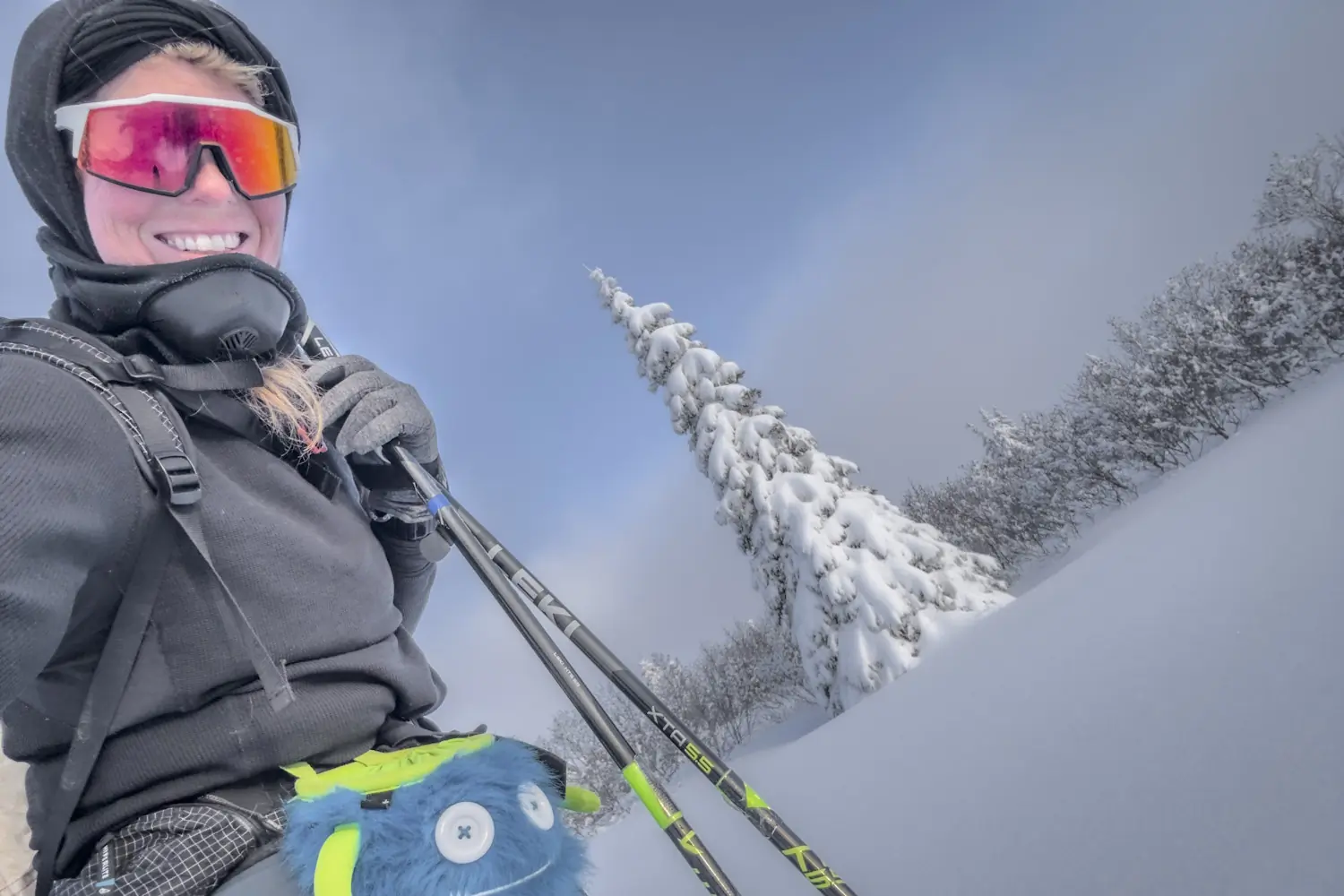



OK, so this was in March and April, and it’s now July. Why do you think this wasn’t more widely covered and got so little media attention?
There are a couple of elements to it. It got picked up a little in mainstream media. And I think the reason for that is because it’s a cool story, right? It’s Alaska: bitter cold, dogs, first woman, 1,000 miles cross-country skiing, wild last frontier. I mean, it just grabs people.
I think outdoor media hasn’t given this a lot of coverage because of its complexity. As we were saying, there are so many different things to consider — ifs, buts, and other qualifications — all these little things that don’t change the achievement. But if you want to tell a fully clean and accurate story, it just makes it too onerous. The different disciplines, the different lengths, you know?
The other component at play here is that Jasmine Paris completed the Barkley Marathon the week that I finished. That obviously got a lot of recognition, and that was super cool. It was a huge accomplishment for women in the endurance world for Jasmine to be able to finish Barkley. I think there’s almost only so much journalistic bandwidth for celebrating women in the outdoors. And that spot was taken.
It’s just that the race is … it’s far out there. It’s a fantastic story. And I don’t know, maybe it’s too far out there. Maybe it’s a little too complex to put into 1,000 words or even 2,000 words.
The Iditarod is considered the pinnacle of winter ultra-endurance. But again, winter ultra-endurance? That’s pretty freaking specific. But yeah, there are people who spend decades working toward this sort of thing, knowing it from the inside. It’s an incredibly cool event, and it has the storytelling potential.
What advice would you give to other women who want to get into endurance sports and other rad adventures like what you’re doing?
If you have goals or dreams that take you beyond your comfort zone, those goals are usually scary, or at least they should be. And that scariness is what redirects people to then say, “OK, maybe this isn’t for me. Maybe I shouldn’t do it.”
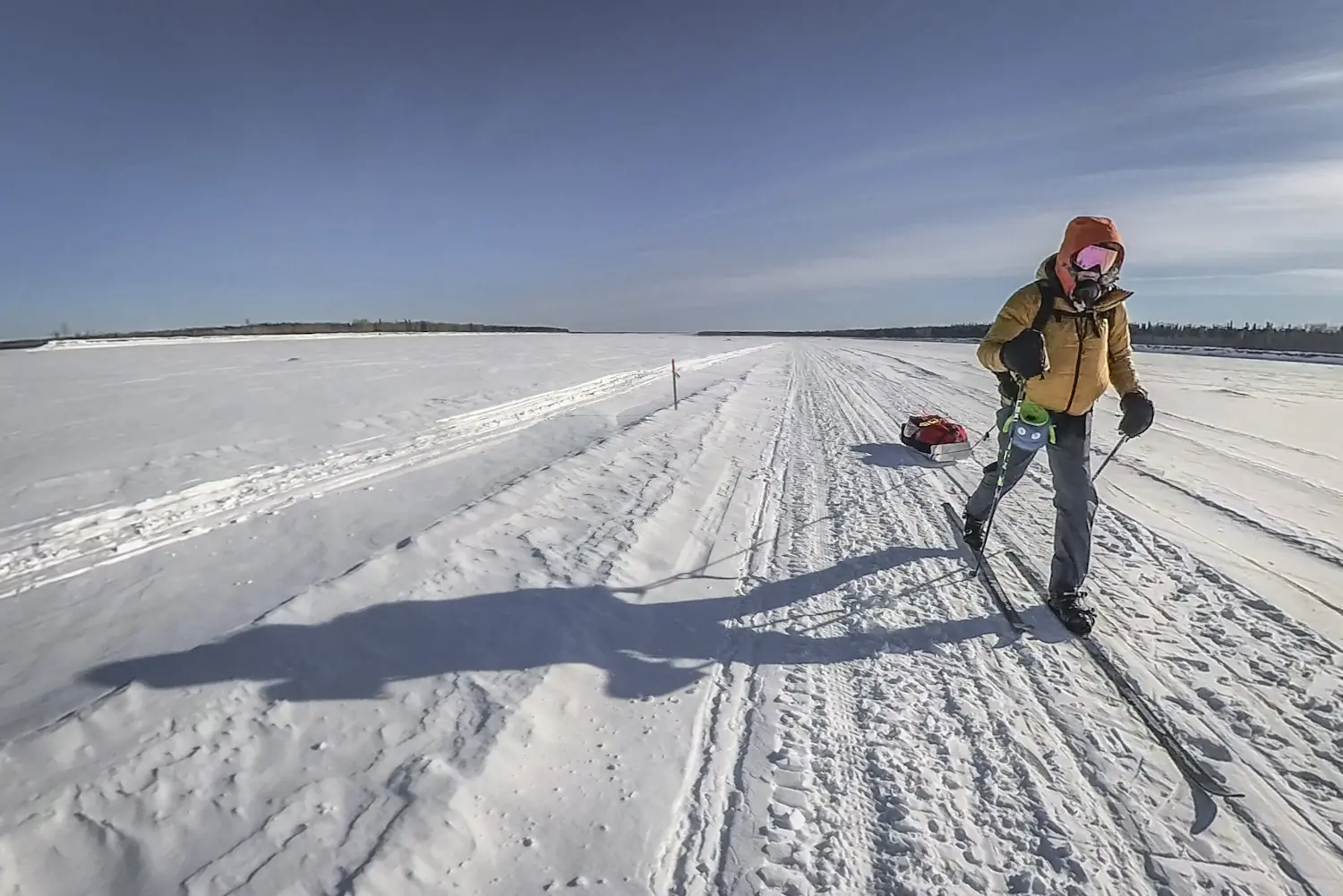



I think when you dream of something or have an objective, it scares the bejeezus out of you, and that’s a really good sign. That’s a sign that you should go for it, maybe not for that actual goal in the moment. But there’s something there that’s grabbing you, that’s motivating you. And that motivation is the biggest determinant of whether or not you will have a shot at being successful.
Think about Alaska. Who wants to ski 1,000 miles through Alaska? Well, I do, and some other people do, too, right? But there are very many people who will look at this and say, “What? Why would you ever do that?”
And then there are the people who think, “That sounds so insane, and scary, and hard, but so cool, but so scary, and I could never do that.” But if it’s that type of reaction you have, then chances are you could do it. Maybe you can’t do it tomorrow. But you can build up toward it by doing things that lead you in that direction. And eventually, you’re going to be ready to do that thing that scared you so much.
Sunny Stroeer’s 2024 ITI Gear List
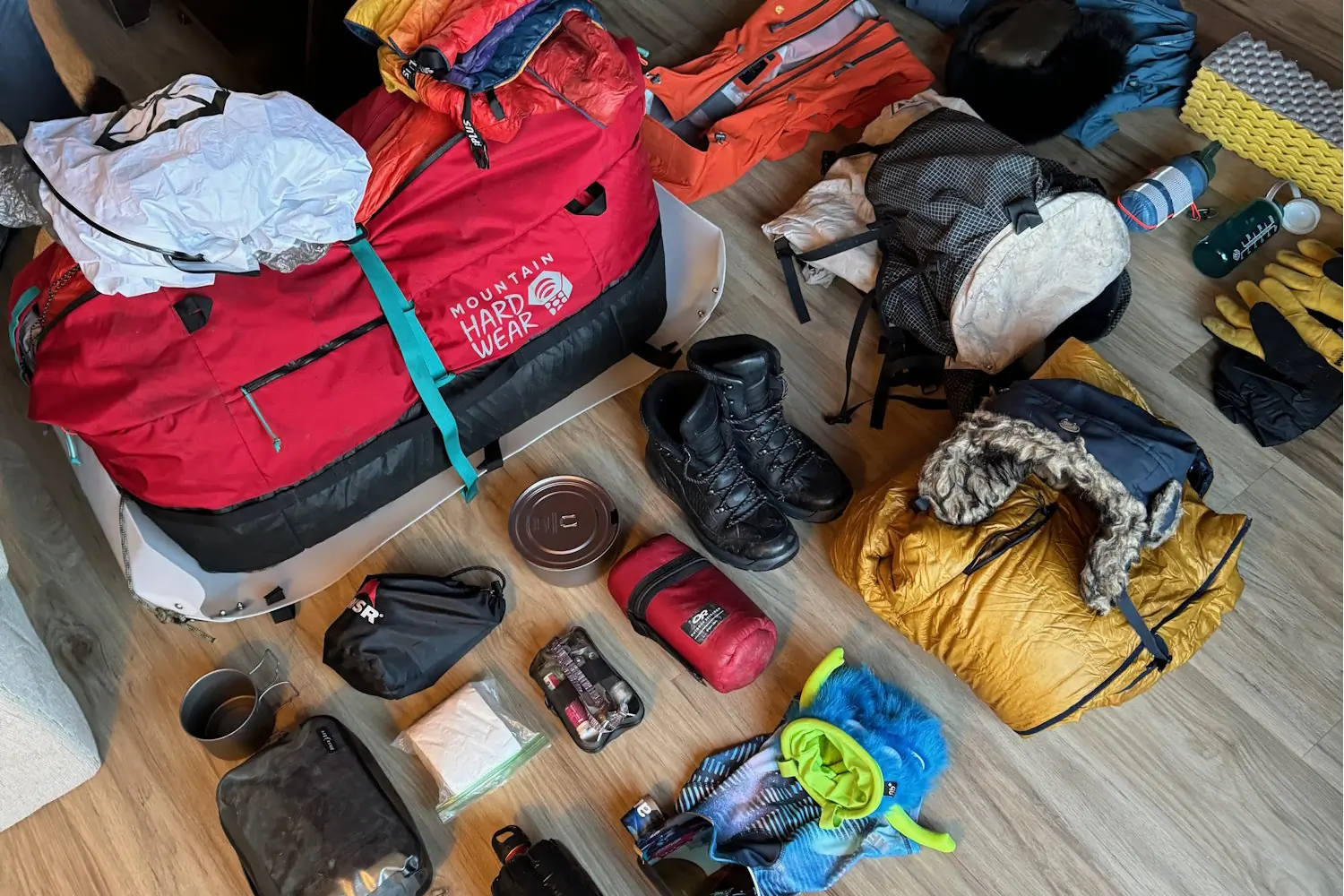



Worn Items
- Transnordic 66 Crown Xtralite Touring Ski
- Altai Skis Universal Pivot Binding
- LEKI XTA 5.5 Aluminum Ski Pole
- Yama Mountain Gear Insulated Pogies
- LOWA Renegade Ice EVO Boots
- Fjallraven Bergtagen Jacket
- Fjallraven Bergtagen Eco Lite Shell Pants
- Smartwool Women’s Classic All-Season Merino Base Layer Long Sleeve Hoody
- Smartwool Women’s IntraKnit Thermal Merino Baselayer Bottom
- Deerskin Leather Insulated Work Glove Warm Polar Fleece Heated Heatlok
- Woodroad Gear Company Alpaca Wool Blend Knee-High Socks
- Cold Avenger Mask
- Garmin Fenix Sapphire
- Nite Ize RH2 PowerSwitch with two battery packs
- Nite Ize Gear Ties
Worn Emergency Kit
- Nite Ize RunOff Waterproof Phone Case
- Homemade firestarter set
- Leatherman Surge
- Ibuprofen
- Credit card
- ID
Gear Carried in Sled
- Alaska Gear Company LB Flex Sled
- Mountain Hardwear Expedition Duffel 100
- Big Agnes Cinnabar -40F
- Samaya Nano Bivy
- Therm-a-Rest NeoAir XTherm sleeping pad
- Rumpl Original Puffy Blanket, modified to wear as a skirt
- Zpacks Goose Socks
- Ultimate Direction Ultra Flip Gloves
- Handmade lined alpaca gloves, purchased from street vendor in Cusco
- Fjallraven hat
- Large Thermos
- MSR XGK EX Stove
- MSR 30-oz. fuel bottle
- OliCamp Titanium Space Saver Pot with Lid – 900 mL
- Toaks Titanium Long Handle Spoon
- SPOT Tracker
- Power bank
- Fast-charging multi-outlet wall adaptor
- USB-C + watch cord + micro-USB + Whoop charger
- 20 strips of KT tape
- First-aid kit and bandages
Gear in Backpack
- Hyperlite Mountain Gear Southwest 40
- Mountain Hardwear Phantom Down Jacket
- Garmin inReach Mini
- Kula Cloth
- Extra lighter
- SPF lip balm
- 2 small water bottles
- 2 water bottle covers
- 2 500mL soft flasks
Oh Shit Kit (In a Backpack)
- Waterproof Nite Ize RunOff Large Packing Cube
- Baselayer bottom
- Baselayer top
- Bra
- Alpaca socks
- Liner gloves
To follow more of Sunny Stroeer’s adventures, check out her Instagram page (@sstroeer) and visit her website. To learn more about the Iditarod Trail Invitational (ITI), visit the race’s website, which has results, news, and ways to get involved.
